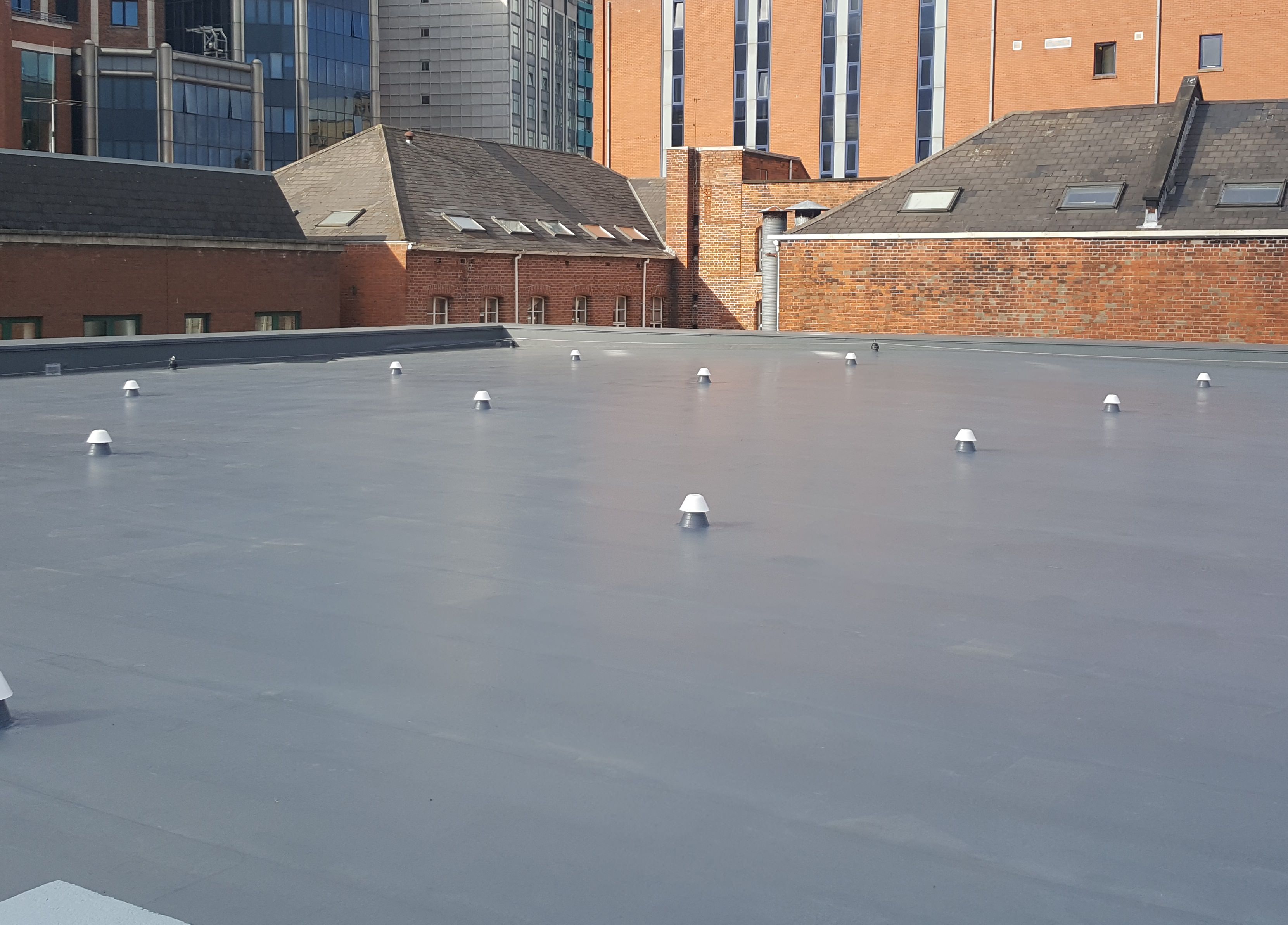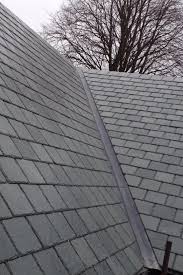
There are many types of roofing drainage systems. A downspout drainage system is the most common. It is responsible for carrying water away from scuppers, and directing it to the ground. Cast iron drainage systems are sturdy and very reliable. You can also find a cover that protects against large particles. Cast iron is expensive and requires regular maintenance. Polyvinylchloride drainage systems, which are less expensive and have more versatility, are better.
There are three basic types in roof drainage systems. A common roof drainage system is the RD300 AC roofing drain. It has a highly reliable compression seal to prevent leakage. Another type of roofing drainage system is an RD-300-AC. This drain system features a domed strainer. The strainer can be adjusted from one-inch to three-and–a-half inches. These drainage systems are made out of an epoxy-coated cast-iron and feature a self locking polyethylene dome.

There are two types. Positive roof drainage systems use siphoning for drainage. These systems are most commonly found on flat commercial roofs. These drains also require less drains than other roof drains. These systems are also cheaper than other roofing drains and require less work to install. These systems require more maintenance than other types. This type of drainage system does not require as many sloping roofing systems as other systems.
The primary roof drain connects to other parts in the roof drainage system. Its primary function is to transport rainwater to the ground or another disposal area. These drainage systems are also called overflows. These roof drains will always have a two-foot water dam. The water dam can be either external or inner. They are the most effective in situations where a large amount of water accumulates on a roof. If the primary roof drainage system fails, a second one will be needed.
There are many types and styles of roofing drains. Some drains are hidden while others are easily visible. Installing an inner roof drainage system requires careful planning. It is a good idea to choose a lower channel instead of a higher one. These are more efficient but can cause flooding if the inner roof drain is placed on the inside.

Scuppers are the most widely used type of roof drain. They are installed on the edge of a roof and are designed to prevent water from pooling on the roof. They are often made of sheet metal and are installed with a gutter or downspout. In other cases, they may be attached directly to the roof or secured using an underdeck clamp. The location of the roofing drain is important. It should be in the middle of the parapet, and slope away from the exterior wall.
FAQ
Can you live in a house during renovation?
Yes, I can live in my house while renovating it.
Is it possible to live in a house with renovations going on? The length of construction takes will determine the answer. If the renovation lasts less then two months, then it is possible to live in your home while it is being constructed. If the renovation takes longer than two weeks, however, you can't live in your home during the construction.
There are many reasons why you should not live at home during major construction projects. You might be hurt or even die from falling objects on the site. The heavy machinery and noise pollution at the job site can also cause dust and noise pollution.
This is particularly true if you live on a multi-story home. In this case, the sound and vibration created by the construction workers might cause severe damage to your property and its contents.
You'll also need to cope with the inconvenience of living in temporary housing while your house is being renovated. You won't have all the amenities of your home.
As an example, your washer and dryer will be out of commission while they are being repaired. In addition to the unpleasant smells of chemicals and paint fumes, you will have to endure the noises made by workers.
All of these factors can create stress and anxiety for you and your loved ones. Therefore, it is important to plan ahead in order not to feel overwhelmed by the situation.
Do your research before you begin renovating your home. You can avoid costly mistakes later.
You can also consider professional advice from a trusted contractor to ensure smooth running of your project.
Is it cheaper to build a new house or remodel an old one?
There are two choices if you are thinking of building a new house. You can buy a pre-built house. This type of home can be moved in to immediately after it is built. You could also build your dream home. If you choose this option, you will need to hire someone to help you design your dream home.
The cost of building a new home depends on how much time and money you spend designing and planning it. Because you will likely be doing most of the work yourself, a custom home can require more effort. However, you have more control over what materials you use and where they are placed. It might be easier to find a contractor that specializes in custom-built homes.
A new home is usually more expensive than a remodeled home. The reason is that you'll need to pay more for the land, as well any improvements. Permits and inspections are also required. The price difference between a newly built and remodeled home averages $10,000-$20,000.
What should I look for when buying a home?
You need to ensure you have enough funds available to cover closing costs before you buy a home. You might consider refinancing your mortgage if you don't have enough money.
Statistics
- According to the National Association of the Remodeling Industry's 2019 remodeling impact report , realtors estimate that homeowners can recover 59% of the cost of a complete kitchen renovation if they sell their home. (bhg.com)
- A final payment of, say, 5% to 10% will be due when the space is livable and usable (your contract probably will say "substantial completion"). (kiplinger.com)
- They'll usually lend up to 90% of your home's "as-completed" value, but no more than $424,100 in most locales or $636,150 in high-cost areas. (kiplinger.com)
- Rather, allot 10% to 15% for a contingency fund to pay for unexpected construction issues. (kiplinger.com)
- On jumbo loans of more than $636,150, you'll be able to borrow up to 80% of the home's completed value. (kiplinger.com)
External Links
How To
Five Things You Must Know Before Starting Your Home Renovation
-
Do you really want this? It's likely that you will need assistance if you plan to tackle a large home improvement project, such as remodeling your kitchen or bathroom or building a new home. You might reconsider if you're not confident enough to handle such a huge task on your own. It will take up much of your time and money. There won't be any real benefits. Instead, why not hire someone who knows what they're doing to help out? You'll be able to save a lot of time and stress while still having a lovely space to call your own.
-
How much should a project cost? This might sound obvious, but spending too much money on a renovation could lead to more problems. The reason is because you'll probably find yourself having to pay back most of the costs at the end of the day. So if you've got a budget in mind, stick to it! Otherwise, you could end up paying a fortune without getting anything in return.
-
Do I hire professionals or do I need to DIY? - There is no right or incorrect answer. However, we recommend hiring professional tradespeople when you can afford them. After all, they'll be able to give you advice on how best to proceed with your project. They can install the plumbing correctly and make sure that it is done safely. DIY projects often involve a lot trial and error. You'll learn a lot the hard way. Additionally, you will have to deal all manner of problems that can arise along the way.
-
What are my options? - Don’t underestimate the cost associated with a home renovation. Even if the project seems manageable, it could prove costly and you will need to borrow money. If you are planning on selling your existing property soon after finishing the renovations, it is important to include the cost of selling it in your calculations.
-
Which place should I start? There is no right or wrong place to begin when it comes to starting. However, we would suggest that you choose somewhere that you enjoy working on. You'll feel more motivated to work and less likely to procrastinate. Avoid areas that require constant maintenance. If your living area is constantly cluttered with dust and dirt, you should not attempt to redesign it.